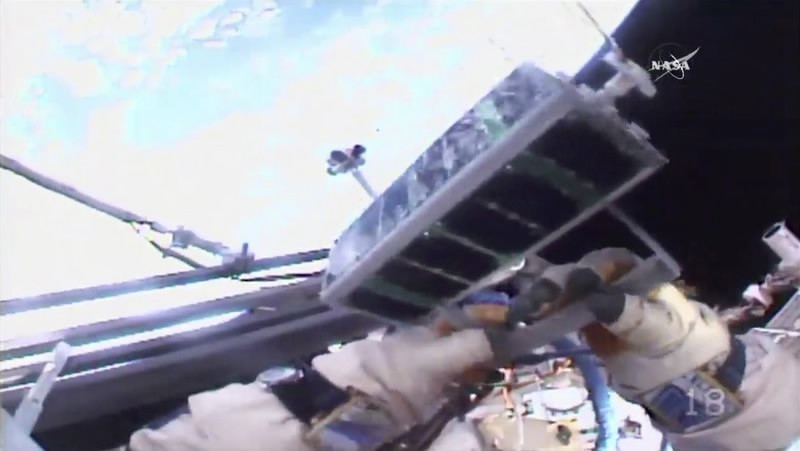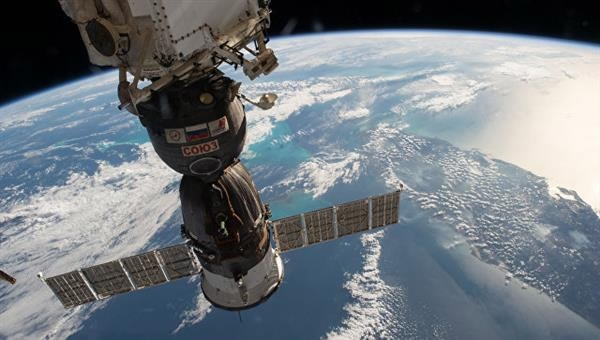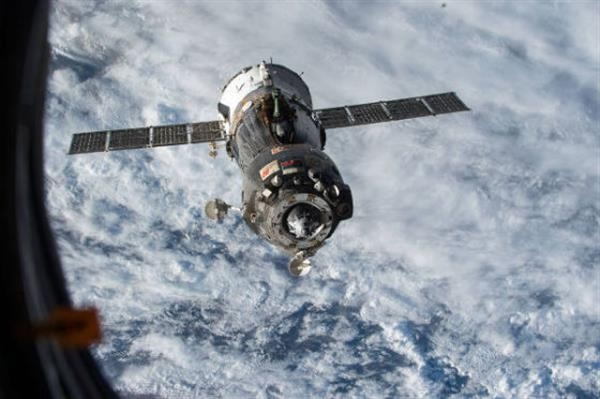
Tech & Sci
15:39, 18-Aug-2017
Spacewalking cosmonauts release 3-D-printed satellites

Spacewalking cosmonauts set free the world’s first satellites made almost entirely with a 3-D printer on Thursday.
In total, Russians Fyodor Yurchikhin and Sergey Ryazanskiy ended up releasing five nanosatellites by hand. One by one, the tiny devices — no more than 1 to 2 feet in size — tumbled safely away from the International Space Station.
CGTN captured the moment on live Thursday
The exterior casing of the first one tossed overboard was made with a 3-D printer. So were the battery packs inside. Researchers want to see how 3-D-made parts weather the space environment.

In total, Russians Fyodor Yurchikhin and Sergey Ryazanskiy (pictured above) ended up releasing five nanosatellites by hand. /ISS Photo
In total, Russians Fyodor Yurchikhin and Sergey Ryazanskiy (pictured above) ended up releasing five nanosatellites by hand. /ISS Photo
The 3-D satellite contains regular electronics. It also holds greetings to planet Earth in a variety of languages, courtesy of students at Siberia’s Tomsk Polytechnic University, where the satellite was made.
The other satellites deployed Thursday have traditional spacecraft parts.
Each weighs just 10 to 24 pounds. They’re expected to orbit for five to six months.

The satellites /NASA Photo
The satellites /NASA Photo
One commemorates the 60th anniversary of the world’s first satellite, Sputnik 1, launched Oct. 4, 1957, by the former Soviet Union. Another pays tribute to Russia’s father of rocketry, Konstantin Tsiolkovsky. He was born 160 years ago next month.
The remaining two small satellites involve navigation and other experiments.
Yurchikhin and Ryazanskiy completed the satellite release within an hour of venturing outside. Barely a minute passed between a few of the launches. The rest of their work took longer than expected, however, and Russia’s Mission Control outside Moscow sent the planned six-hour spacewalk into overtime. It ended up lasting 7 1/2 hours, and the cosmonauts said their hands were tired. All but one task got done.

The satellites /NASA Photo
The satellites /NASA Photo
“We will have actually some grounds to get drunk today, I think,” one of the cosmonauts joked in Russian. A flight controller replied that he’d do it for them.
The cosmonauts conducted scientific experiments from outside their 250-mile-high home, and wiped thruster residue from various surfaces for analysis. Three Americans and one Italian also live on the space station.
Source(s): AP

SITEMAP
Copyright © 2018 CGTN. Beijing ICP prepared NO.16065310-3
Copyright © 2018 CGTN. Beijing ICP prepared NO.16065310-3